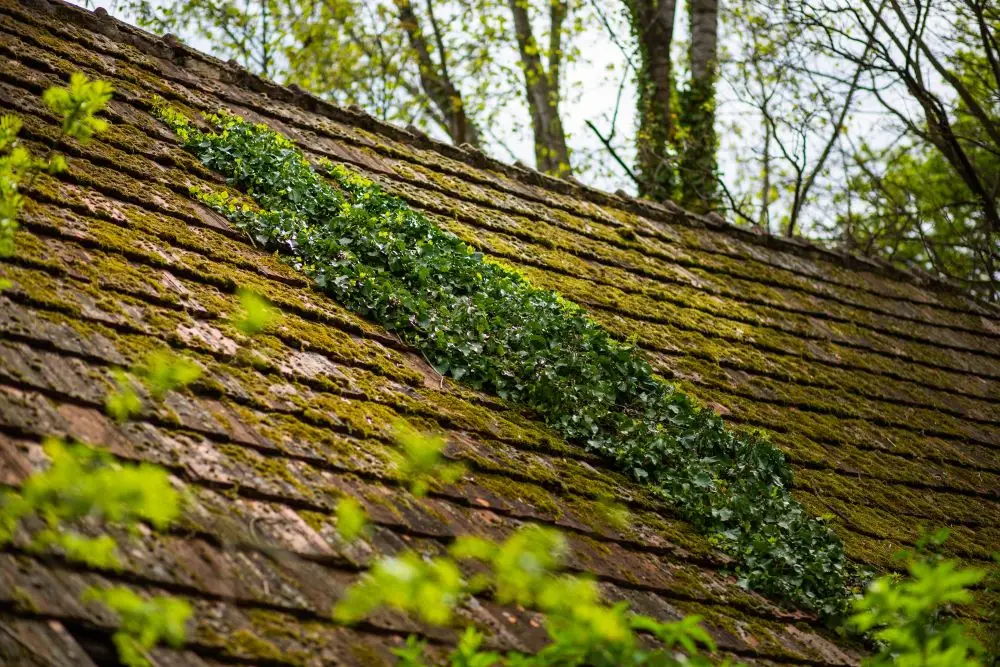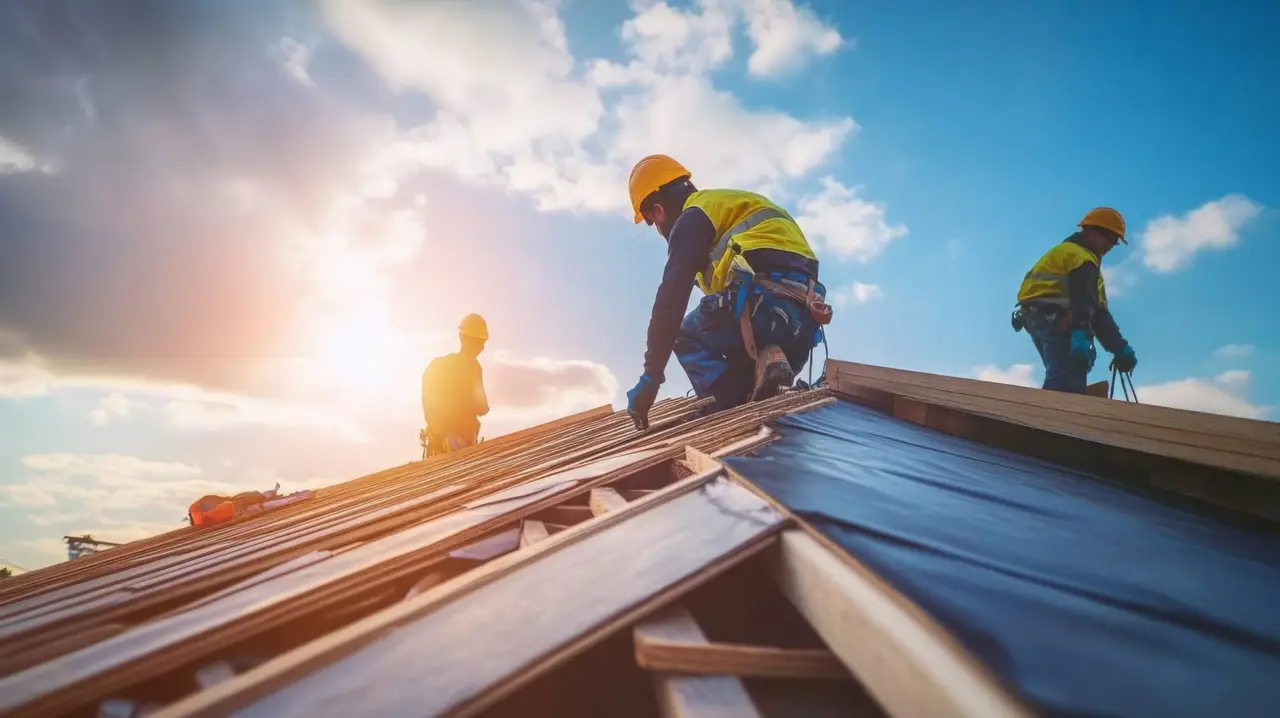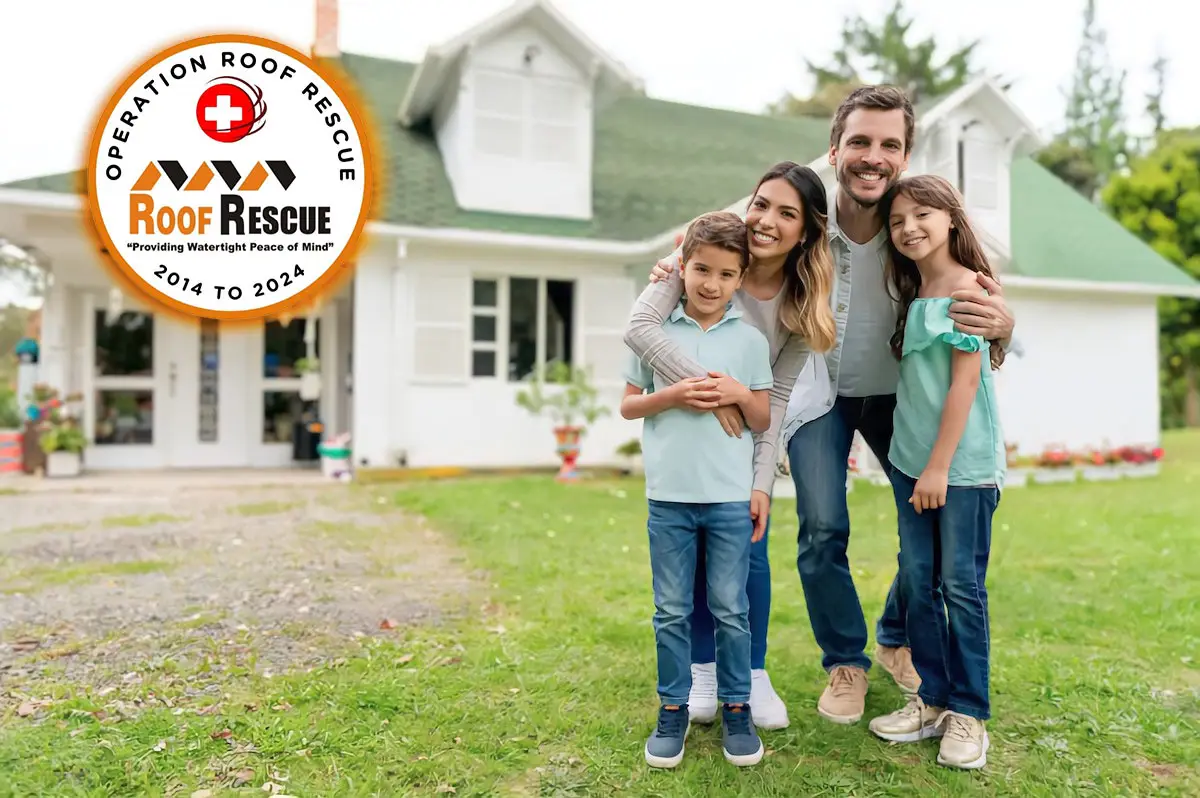
The average roof replacement cost is about $10,000, but it can be much more. When buying a new home, you may not want to spend that on top of your downpayment and closing costs. A roof can last between 20 and 50 years, but where is your new home’s roof in the cycle? Or perhaps the roof was installed by the cheapest option and was never the best.
How do you know whether your new home has a good roof? The best way is to get a roof inspection done before you close on the property, but here are a few things to consider.
Age of the Roof
Ask the seller when the roof was last replaced. There’s no guarantee a new roof won’t have problems, but the chance of problems increases with age. Assuming the roof was well installed and quality materials were used, the average lifespan of a roof depends on the material used. Here are some common materials and how long they typically last:
- Green (vegetation) – 5 to 40 years
- TPO rubber – 7 to 20 years
- EPDM rubber – 15-25 years
- Modified bitumen – 20 years
- Synthetic slate – 10 to 35 years
- Three-tab asphalt shingles – 20 years
- Fiber cement – 25 years
- Architectural asphalt shingles – 30 years
- Built-up roofing – 30 years
- Wood – 40 to 50 years
- Slate – 60 to 150 years
- Copper – at least 70 years
- Clay tiles – at least 100 years
- Concrete – at least 100 years
The majority of residential roofs in the U.S. are architectural asphalt shingles. Also consider your local climate. Storms can damage the roof and extreme heat can cause asphalt shingles to “curl”. A well-maintained roof will obviously last longer.
If the seller can’t tell you the age of the roof, you can ask neighbors (who will likely have noticed the last time the roof was replaced) or even call around local roofers to see if anyone worked on it recently.
Visual Inspection
There’s no substitute for a professional inspection, but a quick visual inspection might tell you if there are likely issues with the roof. Some things to look for are:
- Loose or missing shingles, tiles, or slates. Fallen slates will often break into small shards when they hit the ground, so look for these around the house if it has a slate roof.
- “Granules” in the gutter or around the house. If you see small, round debris the same shade as the roof, this means the shingles are worn.
- Warped roofing material, including curled shingles.
- Rust on a metal roof.
- Discoloration of the roof surface.
- Presence of mold or algae on the roof.
- Sagging areas.
In some cases, surface discoloration may mean the roof needs to be repainted. Any clearly visible damage to the roof means at least significant repairs are going to be needed, if not a new roof. If you’re inspecting the home during the winter, ice dams on the roof are also a warning sign. If there are icicles dangling from the roof, it’s a good idea to take a look.
Interior Signs of Roof Issues
When you tour the home, look for signs of roof leaks and other issues. Any water stains on ceilings or walls should be suspect. These can also indicate a potential issue with the plumbing. Paint peeling on walls is a classic example of water damage. Sagging ceilings indicate major water damage.
Ask to see the attic. Look for signs of leaks and daylight, and also for signs that anything might have taken up residence there, such as squirrels or bats…likely the critters got in through a compromised part of your roof. You can also assess the quality of the attic insulation while you are up there. Look at the underside of the roof for white nails (shiners).
Mold anywhere in the home, but especially in the attic, can also indicate a roof problem.
Structural Integrity
What is the condition of the gutters and downspouts? If the gutters are sagging, etc, then this may indicate a lack of attention being paid to the roof (it’s also a bad sign for the foundation).
When touring the home, pay attention to the temperature gradient between downstairs and upstairs (if the home has multiple storeys). If the upstairs rooms are noticeably warmer, this can be a sign of improper attic ventilation. Same note if the attic is particularly “cozy.” Any visible moisture in the attic also indicates poor ventilation…and can lead to mold or mildew.
Professional Inspection
Your new home is a big investment and the last thing you want is to realize a month after moving in that you need a new roof. All of the above signs are worth looking for, but if you’re seriously interested in a house, hire a local roofer to do a professional inspection.
Make sure that you choose a certified roof inspector. A general home inspector can’t tell you what’s wrong with the roof, although they can point out signs something is wrong with it. A roof inspection is a good contingency to add to the sale.
The roof inspector will look at the outside of the roof, the area around the home, and the attic to get a comprehensive idea of any issues. They can also give you a professional estimate of the age of the roof and an idea of when you might need to next replace it. You will get a detailed report of any and all issues with the roof.
Negotiating Roof Issues in Home Purchases
So, what do you do if you discover your dream home has a damaged roof? One option is, of course, to walk away. Depending on your local market, you may be able to find a very similar home without these issues.
You do, however, have another option, and that is to negotiate. Talk to the seller about the roof problems. You may be able to use the roof issue as leverage to lower the price, potentially by more than replacing the roof would cost. Another option, particularly if you aren’t in an immediate hurry to move, is to try to get the seller to take care of it before you move in.
A roof inspection will tell you whether the roof needs to be replaced or repaired. You may decide that small repairs are not an issue. But a complete replacement is definitely grounds to negotiate or to get your buyers’ agent to negotiate.
The roof is perhaps the most important part of a home. Without a good roof, other parts of the house can easily become damaged, and poor attic ventilation can lead to health problems. If you are buying a home, contact Roof Rescue for a comprehensive, honest inspection. You can trust us to tell us what work, if any, your new home’s roof needs.
Mark Franklin, owner of Roof Rescue in Idaho Falls, Idaho, has been a trusted name in roofing since 2014. Serving Idaho, Montana, Wyoming, and Utah, Roof Rescue specializes in commercial and residential roof replacement and installation. Recognized for community initiatives like the “Operation Roof Rescue” program, which provides free roofs to local heroes, Mark combines professionalism with a passion for giving back. With 16 years of industry experience, an A+ Better Business Bureau rating, and glowing customer reviews, Mark’s leadership embodies quality and community-focused service.



